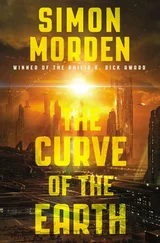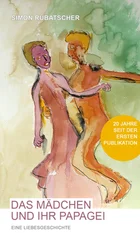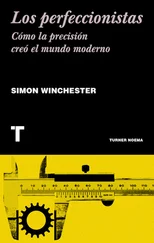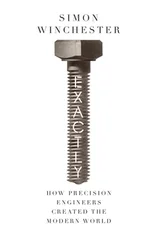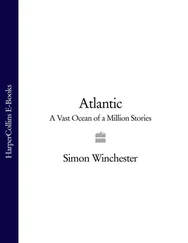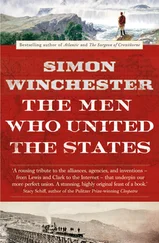Dedication
Epigraph
List of Illustrations
Prologue
Chapter 1: Stars, Seconds, Cylinders, and Steam
Chapter 2: Extremely Flat and Incredibly Close
Chapter 3: A Gun in Every Home, a Clock in Every Cabin
Chapter 4: On the Verge of a More Perfect World
Chapter 5: The Irresistible Lure of the Highway
Chapter 6: Precision and Peril, Six Miles High
Chapter 7: Through a Glass, Distinctly
Chapter 8: Where Am I, and What Is the Time?
Chapter 9: Squeezing Beyond Boundaries
Chapter 10: On the Necessity for Equipoise
Afterword: The Measure of All Things
Acknowledgments
A Glossary of Possibly Unfamiliar Terms
Bibliography
Index
About the Author
Also by Simon Winchester
About the Publisher
List of Illustrations
Unless otherwise noted, all images are in the public domain.
Difference between Accuracy and Precision
John Wilkinson
Boulton and Watt steam engine
Joseph Bramah
Henry Maudslay
Maudslay’s “Lord Chancellor” bench micrometer ( courtesy of the Science Museum Group Collection )
Flintlock on a rifle
Thomas Jefferson
Springfield Armory “organ of muskets”
Joseph Whitworth
Crystal Palace
Whitworth screws ( courtesy of Christoph Roser at AllAboutLean.com )
“Unpickable” Bramah lock
Henry Royce
Rolls-Royce Silver Ghost ( courtesy of Malcolm Asquith )
Ford Model T
Ford Model T (exploded)
Henry Ford
Ford assembly line
Box of gauge blocks
Qantas Flight 32 (2010 incident) ( courtesy of Australian Transport Safety Bureau )
Frank Whittle ( courtesy of University of Cambridge )
Turbine blades ( courtesy of Michael Pätzold/Creative Commons BY-SA-3.0 de )
Rolls-Royce Trent engine
Qantas Flight 32 failed stub pipe diagram ( courtesy of Australian Transport Safety Bureau )
Early Leica camera
Leica IIIcs
Hubble Space Telescope
Hubble mirror being polished
Null corrector
Jim Crocker ( courtesy of NG Images )
Roger Easton ( courtesy of the U.S. Naval Research Laboratory )
Transit-system satellite ( courtesy of the National Air and Space Museum, Smithsonian Institution )
Bradford Parkinson
Schriever Air Force Base, Colorado ( courtesy of Schriever Air Force Base, U.S. Air Force )
Ops room of Second Space Operations Squadron
ASML EUV photolithography machine ( courtesy of ASML )
Gordon Moore ( courtesy of Intel Free Press )
John Bardeen, William Shockley, and Walter Brattain
First Bell Labs transistor ( courtesy of Windell H. Oskay, www.evilmadscientist.com )
Chart showing progress from Intel 4004 to Skylake ( courtesy of Max Roser/Creative Commons BY-SA-2.0 )
Main mirror for James Webb Space Telescope
Aerial view of LIGO Hanford Observatory
LIGO test mass ( courtesy of Caltech/MIT/LIGO Lab )
Seiko Building with clock in Ginza ( courtesy of Oleksiy Maksymenko Photography )
Quartz watch ( courtesy of Museumsfoto/Creative Commons BY-SA-3.0 de )
Makers of Grand Seiko mechanical watch
Bamboo creation from Met exhibit ( courtesy of Metropolitan Museum of Art )
Example of fine urushi work ( courtesy of the Japan Folk-Craft Museum )
Prologue
The aim of science is not to open the door to infinite wisdom, but to set a limit to infinite error.
—BERTOLT BRECHT, LIFE OF GALILEO (1939)
We were just about to sit down to dinner when my father, a conspiratorial twinkle in his eye, said that he had something to show me. He opened his briefcase and from it drew a large and evidently very heavy wooden box.
It was a London winter evening in the mid-1950s, almost certainly wretched, with cold and yellowish smog. I was about ten years old, home from boarding school for the Christmas holidays. My father had come in from his factory in North London, brushing flecks of gray industrial sleet from the shoulders of his army officer’s greatcoat. He was standing in front of the coal fire to warm himself, his pipe between his teeth. My mother was bustling about in the kitchen, and in time she carried the dishes into the dining room.
But first there was the matter of the box.
I remember the box very well, even at this remove of more than sixty years. It was about ten inches square and three deep, about the size of a biscuit tin. It was evidently an object of some quality, well worn and cared for, and made of varnished oak. My father’s name and initials and style of address, B. A. W. WINCHESTER ESQ., were engraved on a brass plate on the top. Just like the much humbler pinewood case in which I kept my pencils and crayons, his box had a sliding top secured with a small brass hasp, and there was a recess to allow you to open it with a single finger.
This my father did, to reveal inside a thick lining of deep red velvet with a series of wide valleys, or grooves. Firmly secured within the grooves were a large number of highly polished pieces of metal, some of them cubes, most of them rectangles, like tiny tablets, dominoes, or billets. I could see that each had a number etched in its surface, almost all the numbers preceded by or including a decimal point—numbers such as .175 or .735 or 1.300. My father set the box down carefully and lit his pipe: the mysterious pieces, more than a hundred of them, glinted from the coal fire’s flames.
He took out two of the largest pieces and laid them on the linen tablecloth. My mother, rightly suspecting that, like so many of the items my father brought home from the shop floor to show me, they would be covered with a thin film of machine oil, gave a little cry of exasperation and ran back into the kitchen. She was a fastidious Belgian lady from Ghent, a woman very much of her time, and spotless linen and lace therefore meant much to her.
My father held the metal tiles out for me to inspect. He remarked that they were made of high-carbon stainless steel, or at least another alloy, with some chromium and maybe a little tungsten to render them especially hard. They were not at all magnetic, he added, and to make his point, he pushed them toward one another on the tablecloth—leaving a telltale oil trail to further upset my mother. He was right: the metal tiles showed no inclination to bond with each other, or to be repelled. Pick them up, my father said, take one in each hand. I took one in each palm and made as if to measure them. They were cold, heavy. They had heft, and were rather beautiful in the exactness of their making.
He then took the pieces from me and promptly placed them back on the table, one of them on top of the other. Now, he said, pick up the top one. Just the top one. And so, with one hand, I did as I was told—except that upon my picking up the topmost piece, the other one came along with it.
My father grinned. Pull them apart, he said. I grasped the lower piece and pulled. It would not budge. Harder, he said. I tried again. Nothing. No movement at all. The two rectangular steel tiles appeared to be stuck fast, as if they were glued or welded or had become one—for I could no longer see a line where one tile ended and the other began. It seemed as though one piece of steel had quite simply melted itself into the structure of the other. I tried again, and again.
By now I was perspiring from the effort, and my mother, back from the kitchen, was getting impatient, and so my father set his pipe aside and took off his jacket and began to dish out the food. The tiles were beside his water glass, symbols of my muscular impoverishment, my defeat. Could I have another try? I asked at dinner. No need, he said, and he picked them up and with a flick of his wrist simply slid one off the other, sideways. They came apart instantly, with ease and grace. I was openmouthed at something that, viewed from a schoolboy’s perspective, seemed much like magic.
Читать дальше


